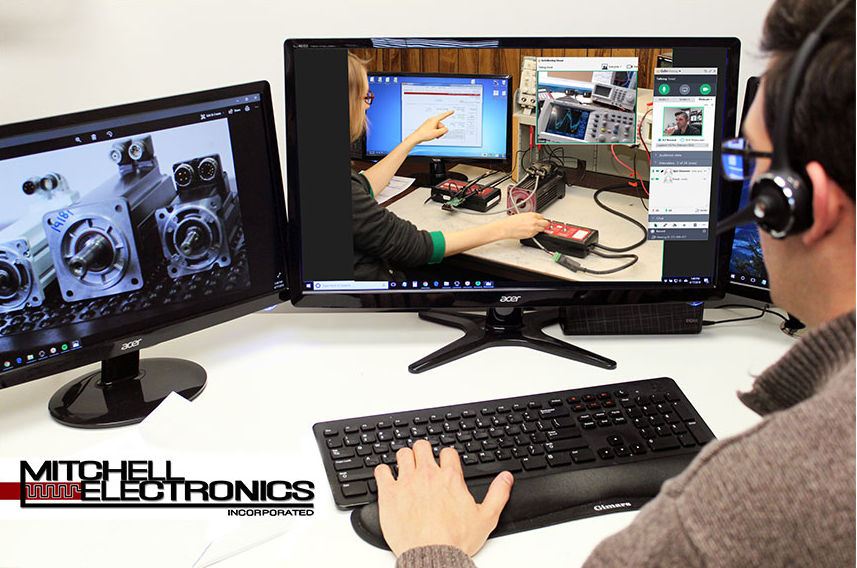5 Ways to Reduce the Costs of Machine Downtime
Manufacturers know it all too well: the dreaded sound of silence. Even minimal machine downtime, whether planned or unplanned, negatively affects output, operational efficiency, revenue, and customer satisfaction. Here are five practical ways that you can keep those machines running and reduce downtime costs.
1. Practice Proactive Machine Maintenance
One of the most effective ways to avoid unplanned downtime is by preventing it in the first place. Preventive maintenance leverages tools and methodologies such as diagnostic equipment, vibration analyzers, thermal cameras, and maintenance during planned downtimes to identify and resolve potential problems so that failure does not occur during an inopportune time.
Regularly scheduled maintenance, such as inspecting servo motors, checking encoder alignment, replacing bearings, cleaning fans, and lubricating moving parts, ensures equipment operates smoothly.
By following the manufacturer’s maintenance schedule and using diagnostic tools like our servo motor testers, manufacturers can identify excessive wear early. For instance, ensuring proper alignment of servo motor encoders during repairs and monitoring power supply consistency can prevent major disruptions. Proactive maintenance not only reduces downtime but also extends the life of these critical components.
2. Stock Spare Parts On Site
Maintaining a well-stocked inventory of spare parts, and the efficient management of this supply, is essential for reducing machine downtime. Supply chain disruptions can prolong downtime and increase costs. Implementing a well-organized inventory system and maintaining an optimal stock level of critical spare parts can significantly reduce the time needed to repair machines.
Ensuring the availability of essential spare parts limits the time machines are out of operation. This not only minimizes production losses but also mitigates reliance on the supply chain while ensuring that schedules are maintained, and customers are happy.
It is often impossible to have a spare part for everything, due to space restraints, or obsolete parts that are no longer available. In these cases preventive maintenance is even more critical and can prevent the need to change out an entire machine due to a single failed obsolete part. Repairs caught earlier tend to be less severe and are further simplified by having the proper diagnostic tools.
3. Keep Tools and a Dedicated Workspace
Relying on external service providers for every repair can be both time-consuming and expensive. Building internal capabilities to handle common issues like replacing bearings, fixing wiring problems, or reprogramming and aligning servo motor feedback devices can dramatically reduce repair time and costs. Having the right tools such as multimeters, surge testers, and encoder alignment systems can simplify many of these tasks and boost repair accuracy.
Additionally, setting up a dedicated workspace for in-house repairs minimizes errors and ensures motors are thoroughly tested before being returned to the production line. This strategy also helps avoid delays caused by shipping components to repair shops.
4. Train Your Team to Servo Maintenance
Having a skilled and knowledgeable maintenance team is crucial for quickly addressing machine downtime. Continuous training ensures that maintenance personnel are familiar with the latest technologies, repair techniques, and troubleshooting methods. It’s also important to equip them with the right tools. And because much of the equipment on the production floor is servo motor powered, it’s important to arm your maintenance staff accordingly.
Servo motor testing tools allow maintenance personnel to quickly diagnose problems. This eliminates guesswork and minimizes disruptions and costs by allowing faulty servo motors to be repaired or replaced.
This approach not only lowers repair expenses but also extends equipment lifespan, optimizes performance, and increases overall productivity. A well-equipped, knowledgeable maintenance workforce results in quicker turnaround times, reduces dependency on external service providers, and maintains continuous, reliable operations, ultimately driving down the financial impact of equipment downtime.
Arm your maintenance team with reliable servo motor diagnostic equipment and ensure that they are trained accordingly.
5. Document Servo Maintenance and Repair
When downtime does occur, quickly identifying and addressing the root cause is critical. Implementing a standardized troubleshooting framework helps technicians systematically evaluate potential issues. This can include:
- Checking power supply stability to avoid erratic motor behavior.
- Verifying tight, corrosion-free connections in wiring.
- Assessing environmental factors like excessive heat, dust, or moisture, which can lead to long-term damage.
- Regularly reviewing and updating control software to match application requirements.
Using diagnostic tools eliminates guesswork. These tools enable technicians to pinpoint problems accurately, such as identifying encoder malfunctions or mechanical misalignments. Faster diagnosis reduces downtime while ensuring repairs address the real issue.
Reducing the Costs of Machine Downtime with Servo Repair Products
Reducing the costs of machine downtime requires a proactive, well-equipped, and skilled approach. By investing in maintenance and training programs, empowering in-house teams, using the right equipment, and standardizing troubleshooting processes, manufacturers can significantly enhance equipment reliability and operational efficiency.
The result? Less downtime, lower costs, and a more productive manufacturing environment.
Take a Deeper Dive Into Servo Motor Repair
For additional information on servo motor troubleshooting and maintenance, download The Quick Reference Guide to Servo Motor Maintenance and Repair. Inside this in-depth guide, you’ll find insights into:
- Diagnosing common servo issues
- Understanding common servo error codes
- Knowing what you can fix in-house and what needs to be sent out for repair
- Identifying tools you’ll need to make repairs in-house
- Learning what makes a successful repair shop
Questions? Contact us here to learn more about our complete line of servo motor repair products, services, and training options!
Servo Motor Training
Mitchell Electronics, Inc. offers servo motor training that’s included with your software license. Our training sessions are collaborative, personalized, and designed to help you and your team learn the skills you’ll need to practice proper maintenance and repair.
Our training is offered 100% virtually. No travel costs or waiting periods… just expert training organized into short, focuses sessions on a single topic, whether that’s servo maintenance, encoder alignment, software training, or other needs your team may have.
And, training is offered English, Spanish, Portuguese, German, or French!



